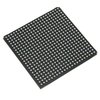Part Details for 5CGXBC9C6F23C7N by Altera Corporation
Results Overview of 5CGXBC9C6F23C7N by Altera Corporation
- Distributor Offerings: (2 listings)
- Number of FFF Equivalents: (0 replacements)
- CAD Models: (Request Part)
- Number of Functional Equivalents: (0 options)
- Part Data Attributes: (Available)
- Reference Designs: (Not Available)
Tip: Data for a part may vary between manufacturers. You can filter for manufacturers on the top of the page next to the part image and part number.
5CGXBC9C6F23C7N Information
5CGXBC9C6F23C7N by Altera Corporation is a Field Programmable Gate Array.
Field Programmable Gate Arrays are under the broader part category of Programmable Logic Devices.
Programmable Logic Devices (PLDs) are reconfigurable digital components that can be customized for different applications, offering flexibility and improved performance over fixed logic devices. Read more about Programmable Logic Devices on our Programmable Logic part category page.
Price & Stock for 5CGXBC9C6F23C7N
| Part # | Distributor | Description | Stock | Price | Buy | |
|---|---|---|---|---|---|---|
|
DISTI #
5CGXBC9C6F23C7N-ND
|
DigiKey | IC FPGA 224 I/O 484FBGA Min Qty: 60 Lead time: 16 Weeks Container: Tray | Temporarily Out of Stock |
|
$515.0515 | Buy Now |
|
DISTI #
989-5CGXBC9C6F23C7N
|
Mouser Electronics | FPGA - Field Programmable Gate Array RoHS: Compliant | 0 |
|
$515.0500 | Order Now |
Part Details for 5CGXBC9C6F23C7N
5CGXBC9C6F23C7N CAD Models
5CGXBC9C6F23C7N Part Data Attributes
|
|
5CGXBC9C6F23C7N
Altera Corporation
Buy Now
Datasheet
|
Compare Parts:
5CGXBC9C6F23C7N
Altera Corporation
Field Programmable Gate Array, 301000-Cell, CMOS, PBGA484, ROHS COMPLIANT, FBGA-484
|
| Rohs Code | Yes | |
| Part Life Cycle Code | Transferred | |
| Ihs Manufacturer | ALTERA CORP | |
| Part Package Code | BGA | |
| Package Description | ROHS COMPLIANT, FBGA-484 | |
| Pin Count | 484 | |
| Reach Compliance Code | compliant | |
| HTS Code | 8542.39.00.01 | |
| JESD-30 Code | S-PBGA-B484 | |
| JESD-609 Code | e1 | |
| Length | 23 mm | |
| Moisture Sensitivity Level | 3 | |
| Number of Inputs | 224 | |
| Number of Logic Cells | 301000 | |
| Number of Outputs | 224 | |
| Number of Terminals | 484 | |
| Operating Temperature-Max | 85 °C | |
| Operating Temperature-Min | ||
| Package Body Material | PLASTIC/EPOXY | |
| Package Code | BGA | |
| Package Equivalence Code | BGA484,22X22,40 | |
| Package Shape | SQUARE | |
| Package Style | GRID ARRAY | |
| Programmable Logic Type | FIELD PROGRAMMABLE GATE ARRAY | |
| Qualification Status | Not Qualified | |
| Seated Height-Max | 2 mm | |
| Supply Voltage-Max | 1.13 V | |
| Supply Voltage-Min | 1.07 V | |
| Supply Voltage-Nom | 1.1 V | |
| Surface Mount | YES | |
| Technology | CMOS | |
| Temperature Grade | OTHER | |
| Terminal Finish | TIN SILVER COPPER | |
| Terminal Form | BALL | |
| Terminal Pitch | 1 mm | |
| Terminal Position | BOTTOM | |
| Width | 23 mm |
5CGXBC9C6F23C7N Frequently Asked Questions (FAQ)
-
Altera provides a PCB design guide and layout guidelines in the '5CGXBC9C6F23C7N FPGA PCB Design Guidelines' document. It's essential to follow these guidelines to ensure signal integrity, reduce noise, and meet timing requirements.
-
To optimize power consumption, use the PowerPlay Power Analysis tool to estimate power consumption and identify areas for optimization. Implement power-saving techniques like clock gating, voltage scaling, and dynamic voltage and frequency scaling. For thermal management, ensure proper heat sink design, thermal interface material selection, and airflow management.
-
Use the Quartus II software to configure and program the FPGA. Follow the 'Quartus II Handbook' and '5CGXBC9C6F23C7N FPGA Configuration User Guide' for guidelines on device configuration, pin assignments, and programming file generation.
-
Follow the '5CGXBC9C6F23C7N FPGA Signal Integrity Guidelines' to minimize signal reflections, crosstalk, and EMI. Use techniques like differential signaling, impedance matching, and shielding to reduce EMI. Also, ensure proper PCB stackup and layer assignment.
-
The 5CGXBC9C6F23C7N FPGA has built-in features like error correction, single-event upset (SEU) mitigation, and configuration memory protection. Implement redundancy, checksums, and error detection and correction mechanisms to ensure high reliability and availability in your design.
